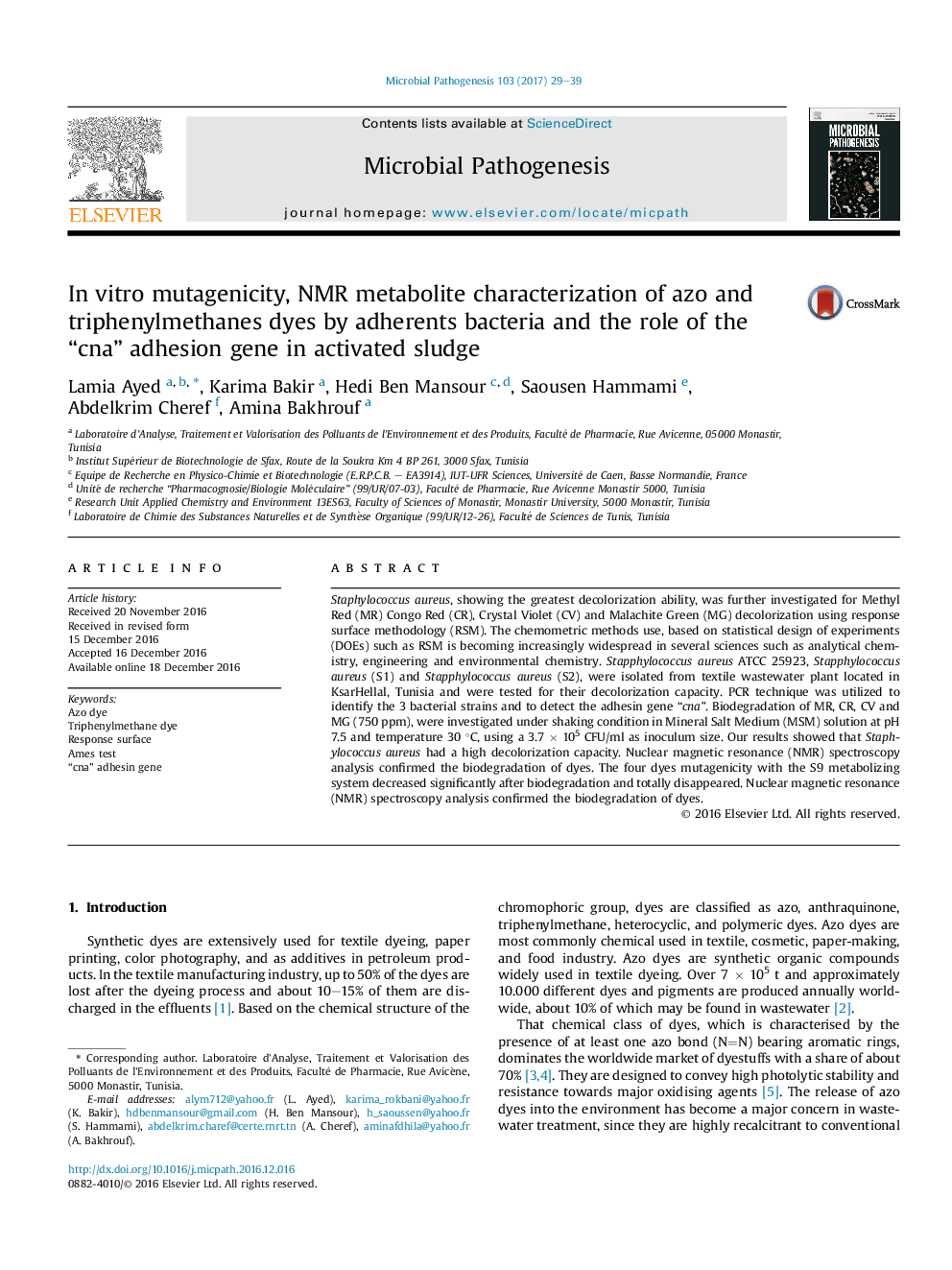| Article ID | Journal | Published Year | Pages | File Type |
|---|---|---|---|---|
| 5673772 | Microbial Pathogenesis | 2017 | 11 Pages |
â¢In the present investigation, the dye was degraded by three strains of Staphylococcus aureus.â¢Staphylococcus aureus, was isolated from the effluent treatment plant of a textile.â¢Phytotoxicity study using Triticum turgidum ssp durum showed the no toxicity of the produced products.
Staphylococcus aureus, showing the greatest decolorization ability, was further investigated for Methyl Red (MR) Congo Red (CR), Crystal Violet (CV) and Malachite Green (MG) decolorization using response surface methodology (RSM). The chemometric methods use, based on statistical design of experiments (DOEs) such as RSM is becoming increasingly widespread in several sciences such as analytical chemistry, engineering and environmental chemistry. Stapphylococcus aureus ATCC 25923, Stapphylococcus aureus (S1) and Stapphylococcus aureus (S2), were isolated from textile wastewater plant located in KsarHellal, Tunisia and were tested for their decolorization capacity. PCR technique was utilized to identify the 3 bacterial strains and to detect the adhesin gene “cna”. Biodegradation of MR, CR, CV and MG (750 ppm), were investigated under shaking condition in Mineral Salt Medium (MSM) solution at pH 7.5 and temperature 30 °C, using a 3.7 Ã 105 CFU/ml as inoculum size. Our results showed that Staphylococcus aureus had a high decolorization capacity. Nuclear magnetic resonance (NMR) spectroscopy analysis confirmed the biodegradation of dyes. The four dyes mutagenicity with the S9 metabolizing system decreased significantly after biodegradation and totally disappeared. Nuclear magnetic resonance (NMR) spectroscopy analysis confirmed the biodegradation of dyes.
